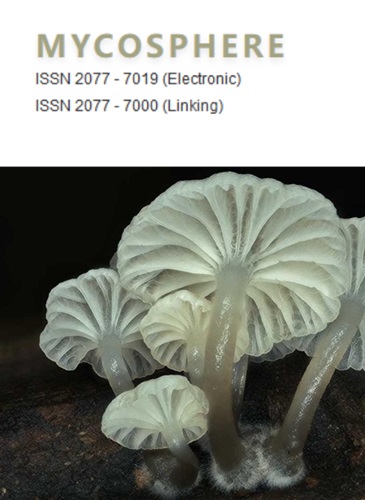马蹄莲花外花蜜中真菌吸引蚂蚁作为植物防御者能力的变化
IF 15.1
1区 生物学
Q1 MYCOLOGY
引用次数: 2
摘要
许多植物与植物的相互作用被认为是相互作用。在Mallotus paniculatus (Euphorbiaceae)(也被称为“风之花”)中,位于叶片底部的花外蜜腺(efn)可以产生富含糖的分泌物来吸引蚂蚁,作为对抗食草动物或植物竞争对手的有效剂。越来越多的证据表明,微生物是昆虫与植物相互作用中重要的“隐藏参与者”。了解哪些微生物作为这样的第三方物种以及它们如何运作是互惠相互作用研究中的一个主要挑战。在本研究中,我们发现两种优势真菌,酵母Jaminaea angkorensis和菌丝真菌Gibellulopsis nigrescens都来自EFNs和蚁体内部(蚁科),足以吸引蚂蚁。研究结果还表明,寄主植物上不同的真菌种类对蚂蚁行为的影响也不同。这些结果可以应用于农业,增加蚂蚁或食草捕食者,以保护植物宿主使用真菌诱饵。此外,它们表明真菌气味是建立植物-微生物-昆虫相互作用的关键信号。传统的植物保护者概念必须更新,以包括微生物的作用。本文章由计算机程序翻译,如有差异,请以英文原文为准。
Variation in the ability of fungi in the extrafloral nectar of Mallotus paniculatus to attract ants as plant defenders
Many plant–ant interactions are considered mutualisms. In Mallotus paniculatus (Euphorbiaceae) (also known as Turn-in-the-wind), the extrafloral nectaries (EFNs) on the base of the leaf laminas can produce sugar-rich secretions to attract ants as effective agents against herbivores or plant competitors. Growing evidence reveals that microorganisms are important “hidden players” in insect–plant interactions. Understanding which microorganisms act as such third-party species and how they operate is a major challenge in the study of mutualistic interactions. In this study, we showed that two dominant fungal species, the yeast Jaminaea angkorensis and the hyphal fungus Gibellulopsis nigrescens both from EFNs and the interiors of bodies of the ant Pheidole megacephala (Formicidae) on their own were sufficient for ant attraction. Our results also revealed that different fungal species on the host plant influenced ant behavior differently. These results can be applied in agriculture to increase ants or herbivore predators to protect plant hosts using fungal baits. Moreover, they indicate that fungal odors represent the critical signal to establish the plant–microbe–insect interactions. The traditional plant– defender concept must be updated to include the role of microorganisms.
求助全文
通过发布文献求助,成功后即可免费获取论文全文。
去求助
来源期刊

Mycosphere
MYCOLOGY-
CiteScore
30.00
自引率
8.20%
发文量
9
审稿时长
4 weeks
期刊介绍:
Mycosphere stands as an international, peer-reviewed journal committed to the rapid dissemination of high-quality papers on fungal biology. Embracing an open-access approach, Mycosphere serves as a dedicated platform for the mycology community, ensuring swift publication of their valuable contributions. All submitted manuscripts undergo a thorough peer-review process before acceptance, with authors retaining copyright.
Key highlights of Mycosphere's publication include:
- Peer-reviewed manuscripts and monographs
- Open access, fostering accessibility and dissemination of knowledge
- Swift turnaround, facilitating timely sharing of research findings
- For information regarding open access charges, refer to the instructions for authors
- Special volumes, offering a platform for thematic collections and focused contributions.
Mycosphere is dedicated to promoting the accessibility and advancement of fungal biology through its inclusive and efficient publishing process.
 求助内容:
求助内容: 应助结果提醒方式:
应助结果提醒方式:


